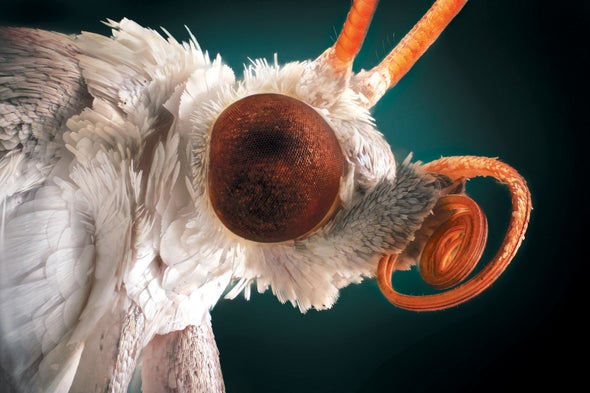Two decades ago biologists and natural historians around the world launched ambitious projects to create inventories of our planet’s biodiversity. After all, they said, you can’t work to save what you don’t know exists. Even the most optimistic estimates suggest only a quarter of Earth’s species are currently known to science, raising concerns about the big picture amid rising extinction rates.
These projects have crept along because of the painstaking work of identifying and describing species—as well as, in many cases, collecting samples of the organisms for DNA sequencing. Now a new approach to cataloguing the world’s animals has emerged: vacuuming DNA out of thin air.
The technique is a variation on one previously used in water, soil and elsewhere, in which scientists collect and sequence environmental DNA (eDNA), the genetic material in cells shed by local species. Pulling eDNA from the air could provide an extensive picture of a location’s inhabitants. It may also prove particularly useful with organisms such as insects, which are notoriously hard to monitor (and are often killed in traditional DNA-sequencing practices). Analyzing eDNA is faster and less costly than collecting and sequencing individual animals, and it can capture data from many species at once—even in hard-to-reach environments.
Two new papers published in Current Biology put airborne eDNA to the test. One group of researchers worked at the Copenhagen Zoo and one in Hamerton Zoo Park in the U.K.—perfect locations to evaluate such sampling because the scientists knew exactly what species were present and how many individuals there were.
The teams used different methods to vacuum or blow air through a filter to extract DNA. Once the DNA was amplified and sequenced, both teams detected many of the species present in the zoo—even those inside buildings or hundreds of meters from the collection sites.
The eDNA sampling also picked up genetic signatures of species outside the zoos’ walls. The U.K. group identified Eurasian hedgehogs, which are vulnerable to extinction in the country, and the Denmark group found genetic traces from squirrels and cats.
The researchers say eDNA is a game changer for monitoring biodiversity: other techniques require the animal to be physically present when scientists are looking. “If you have a camera trap, they have to walk in front of your camera—because if they walk behind it, you’ll never know,” says Elizabeth Clare, a molecular ecologist at York University and a co-author on the U.K. study. “If you’re acoustically recording or [conducting] visual surveys, the animal has to be there. But environmental DNA is more like a footprint. It’s a really fundamentally different type of data. The animal doesn’t physically have to be present, and so you’re much more likely to catch rare stuff.”
A recent proof-of-concept airborne eDNA project, presented at the conference Ecology Across Borders, took similar techniques into the wild to identify insects based on air samples from three locations in southern Sweden. Conservation scientist Fabian Roger and his colleagues at Lund University found DNA traces and matched them with 85 species, including butterflies, beetles, ants and flies, as well as nine noninsect species such as frogs and birds. When compared with results from a conventional survey, the eDNA process missed some species but found others the survey had overlooked.
Roger, now at ETH in Zurich, says he was inspired to try sampling airborne eDNA after monitoring aquatic ecosystems for new species. “It hit me how difficult it was to get good data on populations,” he says. “And with recent research showing a 70 percent reduction in insect biomass, we have a crucial lack of data.”
Researchers estimate that scientists have described only one million of the world’s 5.5 million insect species, so looking to the air to monitor biodiversity is an exciting development that might speed up conservation efforts. “The time is ready for environmental DNA to take on this new substrate,” says Kristine Bohmann, an ecologist at the University of Copenhagen, who co-authored the Denmark study. She adds that she has worked on eDNA from fecal samples, and others have looked at soil and water—and even flowers to discover which pollinating species have landed on them.
There are still questions about airborne eDNA: for one, it is unclear how long genetic material persists in the air. Are researchers detecting a recent presence or one from months earlier? Studies have found intact DNA in permafrost up to 10,000 years after its source organisms perished. But in other conditions, such as exposure to ultraviolet radiation from the sun, DNA may degrade quickly.
Another big question involves abundance. Does a larger signal of a species’ DNA indicate the presence of many individuals or just one that happens to be closer to the sampling station? This is one of the hottest topics in eDNA research circles, Clare says. “The simple answer is no,” she adds. “You can’t know the abundance unless you have extremely controlled conditions.”
Still, the implications of using eDNA from the air to remotely monitor biodiversity are enormous. A global network of air-collecting stations could let farmers know about invasive creatures entering their areas or inform conservation scientists if an endangered bird still lives in a specific area, the researchers say. It would also provide a snapshot of what is out there, faster and cheaper, without people having to do laborious sample collection in hard-to-reach locations. Bohmann once trudged through Madagascar to deliberately attract leeches—and later analyzed the DNA inside the bloodsuckers’ stomachs to learn about the forest’s inhabitants. “If I could avoid being human bait and get the results beamed to me at my computer,” she says, “that would be amazing.”
Editor’s Note: A previous version of this story appeared online with the title “DNA in Air Can Catalog Hidden Insects All around Us”

